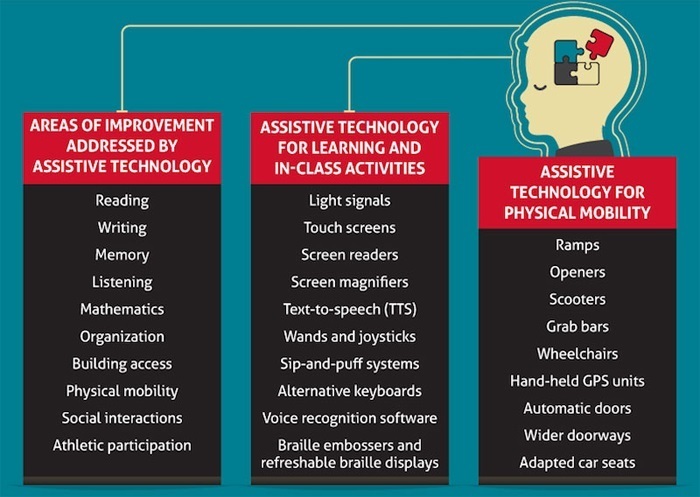How Modern Technology Helps Students With Special Needs
How Modern Technology Helps Students With Special Needs
According to the National Center For Education Statistics, in 2015–2016, the number of students served under the Individuals with Disabilities Education Act (IDEA) in the US was 6.7 million. This number is equal to 13% of all public school students. While the percentage of such students stays pretty much the same during the last years, the total number of them has increased by 0.3 million since 2011-2012. The percentage distribution of different disabilities types is presented in the National Center For Education Statistics website.
These numbers tell us that there can’t be a single technological solution that would suit the needs of all students with special needs. Due to the high diversity of types of disabilities, the best possible outcome can be guaranteed by the use of custom-made solutions designed according to the requirements of a particular group of students.
Special technology allows increasing the independence of a particular student freeing him from the constant need for direct teacher involvement. As a result, a student can choose the speed of learning that is convenient for him which leads to more personalized learning. When a student doesn’t inhibit the learning process for the whole group, it allows reducing the anxiety level which plays a significant role in education as well. Implementation of technologies in special education allows simplifying the communication and improve the academic skills of students with disabilities.

Source: University of Cincinnati
Edmentum, a company with deep expertise in the creation of eLearning solutions, notes the following advantages of using technologies in special education:
“Technology makes it possible for a classroom to be enhanced with individual learning events, allowing instructors to provide greater flexibility and differentiation in instruction. Teachers can use technology to offer a variety of learning opportunities and approaches that engage, instruct, and support special education students with a myriad of tactics designed to appeal to individual learners. No longer are students stuck in a classroom they don’t understand, trying to learn at a pace they can’t keep up with or participate in.”
PowerSchool, another leader in eLearning solutions development also shares an important opinion:
“Technology can help school staff improve IEP compliance necessary for state and federal guidelines as well as ensure adequate and timely funding is procured. Special education management solutions can verify the correct services are not only being offered to all appropriate cases but also tracked and reported on to maximize reimbursement.
With the right technology, educators can develop and manage compliant, high-quality special education documents using intuitive guided actions and business rules aligned with IDEA and other federal and state laws. Reporting functionality can help manage compliance, identifying timelines and which teachers are on track or which teachers have fallen behind. Technology can also help educators run required state and district reports, and if allowed, send data directly to relevant government agencies.”

Comments
Post a Comment